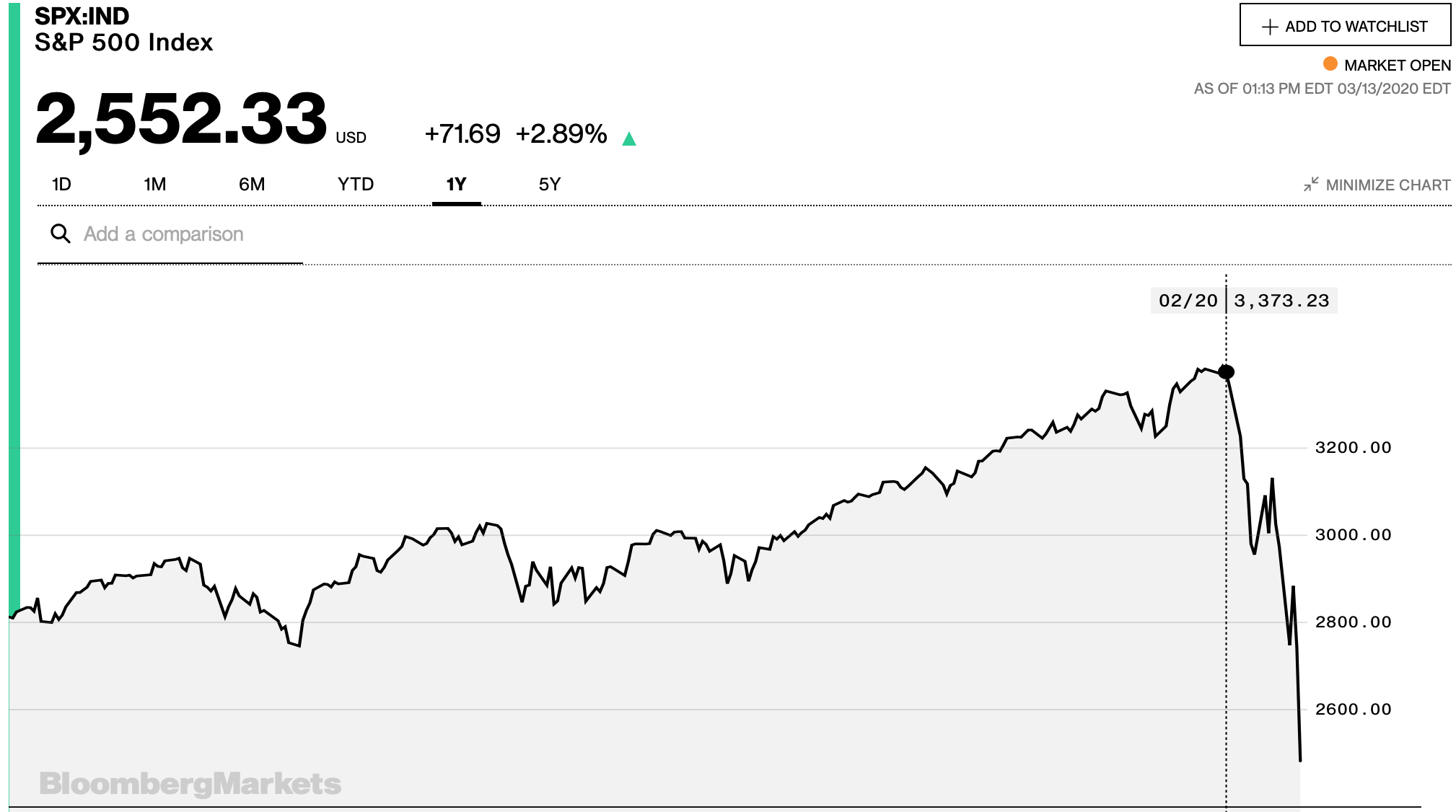Is it better to invest in the stock market or real estate?
As former investment professionals and analysts on Wall Street, our team at Akras Capital has invested through trade wars, market crashes and a whole host of geo-political events that have affected the markets.
In this article, we will compare stocks and real estate in 3 ways, helping to draw a clear distinction between the two asset classes in terms of volatility, diversification and returns. With the market as unstable as it is, we believe now more than ever that you should invest in real estate as a stable, superior alternative or diversification for your portfolio, and ultimately, your future.
#1 Volatility: Fluctuation and Loss of Value

Stocks: As we’ve seen in recent times with the fallout to the COVID-19 Global Pandemic and trade wars, the stock market is very volatile and it’s becoming normal to see large swings in stock prices throughout the day or week due to a news headline, a rumor, or even a presidential Tweet. The advent of algorithmic trading has also greatly increased stock market volatility as computers are capable of executing a high frequency of trades in a minute. It’s easy for small investors to lose some or all of their money if they are buying or selling at the wrong time.
Additionally, stocks are non-collateralized assets, meaning when their value is lost, there is no tangible collateral that you retain – it is a total loss.

Additionally, your investment is collateralized by a physical asset and the property will almost never lose total value.
#2 Diversification and Risk

As stated above, there is risk of high or total loss with the stock market. If the stock market swings thousands of points, you could lose all of your previous year’s earnings, or in the worst case scenario, your total investment.
If you choose to only invest in the stock market, in order to diversify and reduce risk, it is important to buy investment vehicles like mutual funds, which spread risk amongst hundreds of companies.
Real Estate: Real estate is not typically correlated with the stock market and they don’t move together. In a recession, if stocks values down, generally your real estate investment won’t go down as well. In fact, real estate usually outperforms the stock market in a recession, providing nice diversification for your portfolio. It does this because rental demand for economical apartments increases in a recessionary environment, keeping rents stable and multifamily properties profitable.
With real estate, the risk of total loss of value is extremely low. Even if the business plan doesn’t play out perfectly, the underlaying asset (land and structure) and revenue generated by renters is always valuable. It is extremely rare that an investor will lose all of their investment.
It is true that with a real estate investment you have exposure to one large asset, since an apartment building is exactly like a small scale single company. That said, investing in multiple deals helps to diversify your risk across properties and geographic locations.
Additionally, with the Federal Reserve cutting rates, this provides more “runway” into the next year or two for multifamily apartment investments to continue to be as attractive as they have for the last decade.
#3 Returns: How Much Can I Make and When Will I Be Paid?

Stocks: Since 1926, the stock market has returned an average of 10% annually. In today’s market, most investment professionals advise using 6% as the average annual return.
Returns for stocks generally come in the form of appreciation or dividends. Stock prices constantly fluctuate, and the return is only realized when you decide to sell. Some stocks pay dividends quarterly, but these are not guaranteed. When a company performs poorly or when stock prices fall in a recession, investors that do not want to sell low have to wait for the stock to rebound in value. Usually, the company would stop paying dividends to conserve cash during these times, and investors are left without any income. As stated above, in a worst-case scenario, all or most of the value of your investment can be lost.
Real Estate: Returns for group investments in real estate syndications currently range between 13-17%. The deals that we’ve brought to our investors in 2019 targeted 18% annually.* With US Treasury rates continuing to fall, we are expecting to see real estate returns compress.
Real estate returns are typically realized in three ways:
1. Cash Flow. You get paid a monthly/quarterly return/distribution from the property – this is actual cash flow to your bank account.
2. Profit at Sale. As an owner you have equity (ownership) in the property, so you realize an additional return when the property has appreciated and is sold.
3. Profit from Performance. You can share in any outperformance of the property’s cash flow, so if the property does better than the business plan, the investors have a right to earn that extra revenue based upon their equity.
If the property purchased is in the right market and neighborhood location, property rarely loses significant value in the long run. In the event of a total loss scenario from a natural disaster, properties are insured and value can be retained. It is extremely rare that all value is lost.
*Past performance is no guarantee of future results. Market conditions change, as do return profiles for investments. Each deal is different in terms of risks and returns. Please note: This material does not constitute an offer to sell nor is it a solicitation of an offer to buy any securities.

Find Stability and Peace Investing in Real Estate
When you look at all of the facts, ranging from returns and volatility to risk, it is clear that real estate is a superior way to invest your money.
So long as you are passively investing in the right properties, in the right markets and with the right team, you have less likelihood for total loss and far more access and transparency to the investment’s managers. No longer do you need to fear the headlines and every Tweet from a political or economic influencer.
That said, having a blend of assets in your investment portfolio is important so that you don’t have all of your eggs in one basket. The oft-repeated and cliche statement of having “diversification in your portfolio” is absolutely correct. While our main asset base is in real estate, our team maintains a blend of investments including stocks and bonds but for short term cash flow and long term wealth building, multifamily assets are where we love to be.
*No information contained in this article constitutes legal or investment advice. As always, please consult your investment advisor about which investment options are most suitable for you.

Interested In Investing In Real Estate or Want to Learn More?
If you’d like to explore passively investing in real estate with Akras, let’s start a conversation. Get started by taking these steps:
- Educate Yourself: Read our article about investing in syndications.
- Discover Investment Capital: Learn about converting your 401K into an SDIRA.
- Get Started: Create an Akras Insider Investor Profile.
- Connect: Book a time to discuss your goals and our investments.
We’re looking forward to connecting with you.

